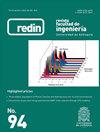支持深部脑刺激编程的机器学习方法
IF 0.5
Q3 ENGINEERING, MULTIDISCIPLINARY
Revista Facultad De Ingenieria-universidad De Antioquia
Pub Date : 2019-12-10
DOI:10.17533/UDEA.REDIN.20190729
引用次数: 3
摘要
深部脑刺激(DBS)治疗中,由于有大量不同的配置,调整刺激参数是一个挑战。因此,基于特定刺激设置产生的组织激活体积(VTA)的可视化系统已经开发出来。然而,医学专家仍然需要通过试验和错误来寻找能够产生所需VTA的DBS设置。因此,我们的目标是为当前的临床设备开发一种DBS参数调整策略,允许在生物物理可行的限制下定义目标VTA。我们提出了一种机器学习方法,可以估计给定VTA的DBS参数值,该方法包括两个主要阶段:i)基于k近邻的变形来定义目标VTA,以保留生物物理上可行的约束。ii)参数估计阶段,包括使用度量学习来突出相关VTA属性的数据投影,以及用于估计生成目标VTA的DBS参数的回归/分类算法。我们的方法可以设置符合生物物理的目标VTA,并准确预测所需的增产参数配置。此外,我们的方法对于各向同性和各向异性的组织电导率都是稳定的。此外,训练系统的计算时间对于现实世界的实现是可以接受的。本文章由计算机程序翻译,如有差异,请以英文原文为准。
A machine learning approach to support deep brain stimulation programming
Adjusting the stimulation parameters is a challenge in deep brain stimulation (DBS) therapy due to the vast number of different configurations available. As a result, systems based on the visualization of the volume of tissue activated (VTA) produced by a particular stimulation setting have been developed. However, the medical specialist still has to search, by trial and error, for a DBS set-up that generates the desired VTA. Therefore, our goal is developing a DBS parameter tuning strategy for current clinical devices that allows defining a target VTA under biophysically viable constraints. We propose a machine learning approach that allows estimating the DBS parameter values for a given VTA, which comprises two main stages: i) A K-nearest neighbors-based deformation to define a target VTA preserving biophysically viable constraints. ii) A parameter estimation stage that consists of a data projection using metric learning to highlight relevant VTA properties, and a regression/classification algorithm to estimate the DBS parameters that generate the target VTA. Our methodology allows setting a biophysically compliant target VTA and accurately predicts the required configuration of stimulation parameters. Also, the performance of our approach is stable for both isotropic and anisotropic tissue conductivities. Furthermore, the computational time of the trained system is acceptable for real-world implementations.
求助全文
通过发布文献求助,成功后即可免费获取论文全文。
去求助
来源期刊
CiteScore
2.00
自引率
0.00%
发文量
27
审稿时长
2 months
期刊介绍:
Revista Facultad de Ingenieria started in 1984 and is a publication of the School of Engineering at the University of Antioquia.
The main objective of the journal is to promote and stimulate the publishing of national and international scientific research results. The journal publishes original articles, resulting from scientific research, experimental and or simulation studies in engineering sciences, technology, and similar disciplines (Electronics, Telecommunications, Bioengineering, Biotechnology, Electrical, Computer Science, Mechanical, Chemical, Environmental, Materials, Sanitary, Civil and Industrial Engineering).
In exceptional cases, the journal will publish insightful articles related to current important subjects, or revision articles representing a significant contribution to the contextualization of the state of the art in a known relevant topic. Case reports will only be published when those cases are related to studies in which the validity of a methodology is being proven for the first time, or when a significant contribution to the knowledge of an unexplored system can be proven.
All published articles have undergone a peer review process, carried out by experts recognized for their knowledge and contributions to the relevant field.
To adapt the Journal to international standards and to promote the visibility of the published articles; and therefore, to have a greater impact in the global academic community, after November 1st 2013, the journal will accept only manuscripts written in English for reviewing and publication.
Revista Facultad de Ingeniería –redin is entirely financed by University of Antioquia
Since 2015, every article accepted for publication in the journal is assigned a DOI number.

 求助内容:
求助内容: 应助结果提醒方式:
应助结果提醒方式:


